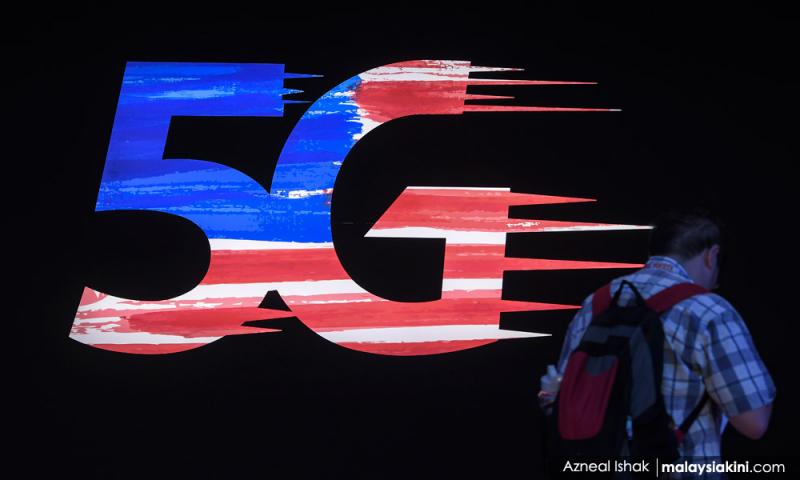LETTER | In March 2021, the government decided to adopt the single wholesale network (SWN) methodology to deploy 5G infrastructure for Malaysia. The two primary advantages of SWN are lowering average (deployment) cost per user per annum and ending the current telecom oligopoly and stimulating retail innovations.
SWN reduces the overall average deployment cost per user per annum. The cost recovery period for 5G is around eight to 10 years before the arrival of 6G. Individual private telcos will build their own 5G networks, which will be passed onto their respective users. Meanwhile, the cost of developing a single 5G SWN will be shared across the entire population. Hence, the average 5G deployment cost per user per annum by private telcos is several times higher than a SWN.
Contrary to popular belief, SWN under a neutral party could dismantle oligopoly. The entry barrier for the telecom sector is substantially high due to upfront costs to build cellular towers. The domestic telecom sector had consolidated into an oligopoly. The SWN model reduces the entry barrier for newcomers.
SWN can be classified as a disruptive model to the existing oligopoly nature of the cellular telecom industry. The success of SWN will decrease cost and increase the quality of cellular service for the entire population.
On the flip side, the SWN model is risky because it has a higher probability of failure due to financial and technical complexity, particularly under an inexperienced new entity such as DNB. The failure to develop reliable 5G infrastructure swiftly will lengthen the cost recovery period. This increases the cost of deployment per user per annum.
SWN executes simultaneous mass deployment of the 5G network, which narrows the urban-rural development gap. However, it requires high upfront capital costs. Surprisingly, the government did not appoint Telekom Malaysia (TM), which has cash reserves worth over RM4 billion, operates 640,000km of fibre optics, and has strong technical personnel to implement 5G SWN.
The 5G implementation cost under DNB will be done through debt such as deferred payment to vendors, bank loans and Islamic Bonds (Sukuk). These debts will be paid through sales of wholesale capacity to private telcos. On a macro-level, this seems like a fool-proof business plan, but micro-level analysis revealed too many red flags in the DNB model that increases the cost of 5G.
First, DNB will be spending nearly RM4 billion as corporate costs for the next 10 years. The corporate cost includes office rental, board of directors, CEO perks, website domain, public relation exercises etc. This additional cost is non-existent for TM.
Second, multi-layered cost on existing telecommunication infrastructure. In December 2021, DNB signed a 10-year lease worth RM2 billion with TM for equipment such as fibre optics and radio access network (RAN). The RM2 billion cost is unnecessary if TM was the SWN developer.
Third, about 18.7 percent of 5G deployment under DNB is funded by deferred payment to vendors. Deferred payment reduces the number of potential bidders than conventional procurement methods. Only 50 percent of the invited network equipment providers (NEPs) submitted the bid to finance, supply, deliver and manage 5G. It is unreasonable to claim DNB received the best price when half the invited bidders dropped out.
Fourth, deferred financing carries a premium over traditional procurement methods. Ericsson Malaysia will provide deferred payment through receivables purchase arrangement (RPA) through a consortium of banks led by United Overseas Bank (M) Bhd (UOB). RPA is a form of financing whereby UOB “buys” the invoice from Ericsson Malaysia to DNB at a discounted rate. Ericsson Malaysia imposed a premium of RM900 million to negate the bank’s discount to keep their profit margin intact.
Fifth, under RPA, UOB would seek payment from DNB and not Ericsson Malaysia. The banks could legally auction DNB’s 5G assets if DNB defaults on the payment obligations. It would be an international embarrassment if banks were to auction property belonging to government-owned firms. Thus, the government will bail out DNB with public taxes.
Sixth, DNB will be taking high-interest bank loans as working capital. Naturally, banks impose very high interest rates for non-collateral and non-guaranteed loans. The high-interest loans translate into higher 5G premiums for the people. For comparison, the coupon (interest) rate for ringgit-dominant bonds by TM is between 4.23 percent to 4.88 percent.
Seventh, the ability for DNB to repay the debt was based on revenue projection from the immediate selling of 5G services to private telcos. There is an ongoing “Mexican stand-off” as private telco refuses to subscribe to DNB’s 5G services. Besides that, private telcos are actively lobbying to set up a 5G consortium parallel to DNB. This further threatens the financial viability of DNB.
In conclusion, the best success scenario is under TM if the government insists on SWN. Appointing TM to deploy a 5G SWN reduces the rollout cost by nearly 50 percent compared to DNB. Subsequently, the average cost of 5G would decrease to RM0.10 per GB. For comparison, the cost of 4G under private telcos is between RM0.45 per GB to RM0.55 per GB.
Alternatively, the government may award the 5G spectrum to private telcos rather than pursuing SWN under DNB.
The views expressed here are those of the author/contributor and do not necessarily represent the views of Malaysiakini.





